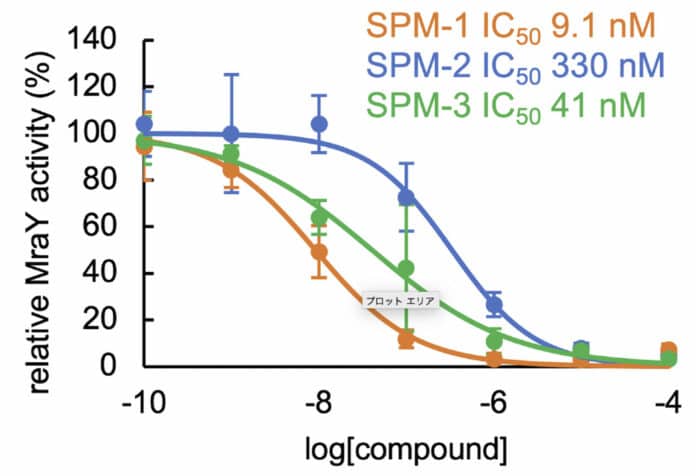Bacterial antimicrobial resistance (AMR) severely threatens human health worldwide. The development of new antibacterial drugs with different mechanisms of action is urgently needed to address antimicrobial resistance.
Scientists at Hokkaido University have been working on the development of new antibacterials. A recent study reported the development of a highly effective antibacterial compound that is effective against the most common multidrug-resistant bacteria.
The group worked on a group of antibiotics known as sphaerimicins. These substances prevent the MraY protein from doing its job in the bacteria. MraY is necessary for bacterial replication and helps to produce the bacterial cell wall; it is not a target of the commercial antibiotics currently on the market.
Ichikawa, a corresponding author of the study, said, “Sphaerimicins are biological compounds and have very complex structures. We set out to design analogs to this molecule that would be easier to manufacture while also becoming more effective against MraY, thus increasing its antibacterial activity. The drug we designed was effective against methicillin-resistant Staphylococcus aureus (MRSA) and vancomycin-resistant Enterococcus faecium (VRE), two of the more common multidrug-resistant bacteria.”
Scientists created two sphaerimicin analogs, SPM1 and SPM2, and synthesized them after using molecular modeling and calculations to analyze the structures of sphaerimicin A. It was discovered that these analogs were efficient against Gram-positive bacteria.
Scientists then determined the structure of SPM1 bound to MraY. They discovered how to further simplify the molecules by examining this structure and contrasting it with comparable antibacterial medicines. They successfully created SPM3, a less complex counterpart with similar action to SPM1.
Ichikawa said, “Our most significant contribution is the construction of the core skeleton of sphaerimicin, which can be used to develop more antibacterial agents that target MraY and hence multidrug-resistant strains. Sphaerimicin is most promising as MraY is also present in Gram-negative bacteria. Future work will include optimization of the currently developed SPM molecules and the development of sphaerimicin-containing antibiotic combinations to target a wider range of bacteria.”
Journal Reference:
- Takeshi Nakaya et al. Synthesis of macrocyclic nucleoside antibacterials and their interactions with MraY. Nature Communications. December 20, 2022. DOI: 10.1038/s41467-022-35227-z
